Is it good for diabetics to mix corn residue, sorghum rice, and buckwheat rice together for cooking?
Corn residue, sorghum rice, buckwheat rice mixed together to make rice is good for diabetics.
It is well known that corn residue, sorghum rice, and buckwheat rice are roughage foods.
Corn residue is people will corn after processing into large particles of corn food, it contains carbohydrates, protein, vitamins, minerals, dietary fiber, etc. Corn residue relative to cornmeal in the human stomach and intestines to digest, absorb, and utilize the slow, can delay the postprandial glucose rise.
Sorghum rice belongs to the grass family, sorghum food, sorghum rice containing high globular protein, containing low gluten, containing less niacin, but absorbed by the human body, there is the prevention of mange, rich in nutrients, corn residue containing high gluten, two kinds of food collocation, can be nutrient complementary, high sorghum rice containing high protein, containing vitamins, minerals, dietary fiber, carbohydrates, which is in the human body stomach and intestines to digest, absorb and utilize is very slow, it can reduce the postprandial The degree of elevation of blood sugar.
Buckwheat rice is also not unfamiliar to the whole grain foods, it contains protein, minerals, dietary fiber, vitamins, carbohydrates and a large number of unsaturated fatty acids, buckwheat rice in the human intestinal and gastrointestinal digestive process stays a long time, absorption, utilization of slow, easy to produce a sense of satiety, reduce the level of elevated blood sugar after meals.
If you mix corn residue, sorghum rice, buckwheat rice together to make rice for diabeticsIt's beneficial.
I would like to remind you that corn residue, sorghum rice, and buckwheat rice mixed together for cooking is good for diabetes butIt is important to consume in moderation to avoid large amounts causing poor gastrointestinal function and complications, and then to avoid large amounts causing large fluctuations in blood sugar.
Finally, I recommend a corn husk, sorghum, and buckwheat rice recipe.
Ingredients: 50 grams of corn residue, 40 grams of sorghum rice, 50 grams of buckwheat rice.
Preparation: (1) corn residue washed and spare, sorghum rice, buckwheat rice washed and soaked an hour in advance spare.
(2) will be ready to corn residue, sorghum rice, buckwheat rice into the rice cooker, pour the appropriate water, cover the lid, plug the power supply, press the timer button, timer button off, corn residue, sorghum rice, buckwheat rice is cooked, open the lid, into a bowl can be eaten.
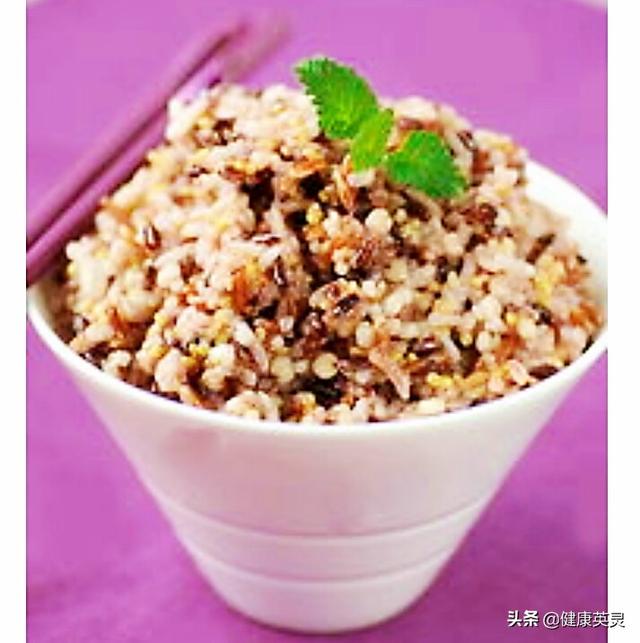
This is coarse grains, mixed together to cook should be a diabetic has the benefit, but these coarse grains only in the human body absorption is slower, unlike mold, rice is easily absorbed. For diabetics, you can not eat too much, eat an excess of the same will be elevated blood sugar. Because it is eventually converted into glucose in the body.
I have done experiments, eat this coarse grain mixed grain rice if overdose, two hours after meal blood sugar 'value of 14.5, and type 2 diabetic patients after meal blood sugar to be less than 11.1, compared to the normal person's blood sugar 2 hours after meal 7.8 to be higher (14.5-7.8) 6.7.
So diabetics should also control the amount of roughage meals, for your health, or eat more vegetarian dishes with the right amount of protein, lean meat and so on.
Every day, patients are inquiring about how to cook meals that are better for their blood sugar. A diabetic's diet is crucial in blood sugar control, and staple foods are at the top of the list.
A diabetic friend asked.
Diabetics advocate eating roughage, so is it okay for me to eat sorghum pancakes every day? (He's from Shandong)
Can cooking corn ballast, sorghum rice, and buckwheat noodles together lower blood sugar?
This shows that everyone recognizes the important role of dietary matching in the treatment of diabetes. Coarse and fine combinations are the requirements of the Dietary Guidelines for Chinese Residents. Coarse grains are rich in dietary fiber, which is one of the seven essential nutrients that provide few calories but have a great effect on the human body.
Dietary fiber is divided into soluble fiber and insoluble fiber, such as fruits, oats, barley and other fibers contained in the fiber for the soluble fiber, and coarse grains contain fiber, that is, sorghum, corn, buckwheat, etc. Most of the dietary fiber contained in the insoluble fiber.
The right amount of dietary fiber is also good for the intestinal tract, can promote digestion, prevent constipation, and rich in dietary fiber can delay the absorption of sugar, reduce the rate of postprandial glucose elevation, increase the sense of satiety, can reduce intestinal absorption of cholesterol, to prevent the elevation of blood lipids.
Sorghum flour food, those who are old enough must have the impression that that kind of food is rough, even after repeated grinding, the grain of that kind of food will still be very big and the taste is very poor.
Now some people in pursuit of health, will eat sorghum, corn, buckwheat and other coarse grains made of food, the major hotels also to provide this type of food, think it is in the forefront of nutritious food. In fact, those foods are finely processed, put into the fine grains to be more, and in order to taste better, more attractive, it will add sugar, etc., which may affect the diabetic's blood sugar level.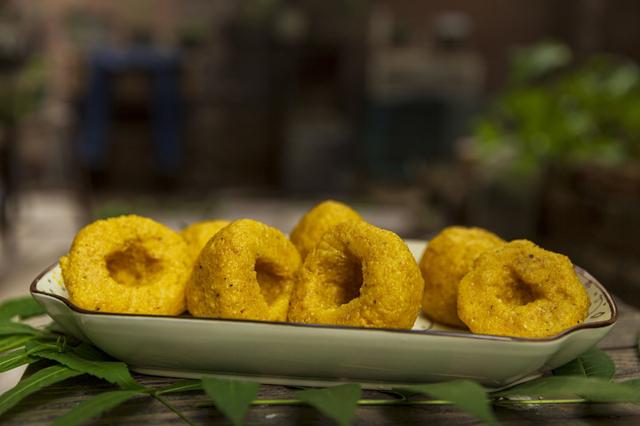
Eating too much roughage will delay the absorption of sugar and cholesterol, but it is also non-selective, and will also reduce the absorption of protein, inorganic salts and trace elements, which in the long run will lead to nutritional deficiencies. Large amounts of fiber can increase the burden on the stomach and intestines, delaying gastric emptying, which can lead to acid reflux, belching, nausea and other digestive symptoms, which are detrimental to digestive health. Excess dietary fiber will also slow down the absorption of medication, thus affecting the therapeutic effect of the medication.
Then how much roughage should be eaten is the right amount? Calculate the amount of staple food you should eat in the diet, the amount of meals should be 70% or 80% full, to measure the postprandial blood sugar, and the difference between the preprandial blood sugar as far as possible can be below 4mmol / L, that indicates that the amount of staple food is still more appropriate.
I'm Dr. Sun, pay attention to Dr. Sun talk about sugar, continue to learn more quality health knowledge, help please like, have questions please leave a message, will reply!
This is beneficial, these ingredients belong to the coarse grains miscellaneous grains, which retains more dietary fiber, dietary fiber can not be directly digested and absorbed, so it can slow down the speed of food digestion, can make starch more slowly converted into glucose into the bloodstream, to assist in smoothing the postprandial blood sugar.
Corn residue, buckwheat rice and other coarse grains brown rice mixed with this rice to cook, can be called "coarse and fine with" to eat, usually we eat more staple food most of the "fine grains", such as white rice, white noodles, steamed buns, dumplings copious, etc., they are generally used to After fine processing of rice, wheat flour made into, called "fine grain" as the name suggests, because they have been fine processing before leaving the factory, we can find that they do a very good job of removing impurities, wheat flour white fine, rice is also almost invisible gravel, compared to 20 years ago to cook the rice and also panning rice, nowadays bags of rice basically do not have to intentionally panning rice can also be directly steamed. The bagged rice now basically doesn't need to be intentionally panned and can be directly steamed.
Although fine grains have the benefits of fine grains, such as more clean and hygienic, less impurities, to make the pasta fluffy and soft, white and tender, but the shortcomings are also more obvious, the loss of a lot of cereals in the processing of the unique bran component, and the consequent loss of more dietary fiber, the loss of dietary fiber means that the food is more conducive to be digested and absorbed, and thus the starch is also easier to be converted into glucose into the bloodstream, the greater the impact of the blood glucose.
Therefore, the "coarse and fine" way is very suitable for sugar lovers. Corn residue, sorghum, buckwheat, or other coarse grains retain more dietary fiber, they can help to smooth postprandial blood sugar. In addition to these coarse grains, mixed legumes, brown rice is also a good choice, such as mung beans, red beans, barley, black beans and so on, as well as black rice, purple rice, red rice, millet and so on. In addition, we can also use potato food instead of staple food, potato food does not have to go through fine processing, they retain a rich dietary fiber, but also belong to the carbohydrate-rich food, can provide glucose energy for the body.
However, it should be noted that it is not "eat these foods" can smooth blood sugar, they are only compared to fine grains can better smooth the rate of increase in blood sugar, but if you eat more, the same will be more carbohydrates and cause excessive sugar intake.
In short, all staple foods should be consumed appropriately and not in excess. Dietary guidelines recommend a daily intake of 250 to 400g of staple foods, of which 50 to 100g of potatoes, 50 to 150g of whole grains, converted to each meal, we can probably eat 1 to 2 handfuls of coarse and fine with cereals (a small bowl of rice), plus one or half of the potatoes, but many of my friends either focus on the fine grains to eat, or eat a lot of super, especially for sugar lovers should pay attention to. Especially for sugar lovers should pay more attention.
Finally, pay attention to the cooking time of staple foods, if cooked for too long, it may increase the degree of "pasting" of starch, destroy the microcrystalline structure of starch, so that the food is more conducive to digestion and absorption, will make the rate of glycemic rise dramatically, so the staple foods should not be boiled for too long, especially love to drink porridge sugar friends best not to be too frequent, porridge is a typical! Foods with longer steaming time and higher degree of starch pasteurization have a greater impact on blood sugar
Thanks for the invitation. Diabetes is an endocrine disease in which blood sugar rises due to a decrease in the quantity and quality of insulin. As a result, diabetics are deficient in their ability to process sugar, and once they consume too much sugar, their blood sugar naturally spikes and their condition is naturally unmanageable!
Here we need to first clarify the concept of sugar. Sugar has a broader and a narrower meaning, the narrower meaning of sugar refers to the "edible sugar" in daily life, such as sucrose, etc. The broader meaning of sugar refers to carbohydrates. Sugar in the broader sense refers to carbohydrates, because these substances are composed of carbon, hydrogen and oxygen, and the ratio of hydrogen to oxygen is exactly 2:1, so they are called carbohydrates.
The composition of carbohydrates consists of monosaccharides (mainly glucose and fructose), disaccharides (mainly sucrose), oligosaccharides, and polysaccharides, which include starch and dietary fiber. The main sugars that can have an effect on blood sugar areGlucose, disaccharide and starch in monosaccharides, oligosaccharides and dietary fiberThen there is no effect.
Knowing these basics, it is easy to understand your question. Corn residue, sorghum rice, and buckwheat rice are carbohydrates, and the starch portion of them will definitely raise your blood sugar, and the dietary fiber portion of them will be helpful in controlling your blood sugar. But in my experience, eating such foods despite the fact that they contain a certain percentage of dietary fiber which is good for blood sugar control, the higher starch content will still raise blood sugar! It's really not recommended.
I still emphasize that the best dietary pattern for diabetics is still a low carbon pattern. For more information about what is low carbon, please follow my headline article - Li Feng, Jiangsu Provincial Cancer Hospital.
Diabetics benefit from eating corn residue, sorghum rice, and buckwheat rice mixed together and cooked into rice.
Because corn residue, sorghum rice, buckwheat rice actually belong to coarse grains, relative to the refined rice, coarse grains of nutrition is more comprehensive, and more dietary fiber, easier to produce a sense of satiety, the glycemic index is lower than the white rice, so, appropriate to eat some grains of rice is very good for diabetes.
Mixed grains are mainly composed of peanuts, barley, red beans, etc. Coarse grains mainly include millet, brown rice, oats, corn, sorghum, barley, black rice, purple rice, buckwheat, bran, etc. in cereals.
Coarse grains can be used as a staple food, although the taste of coarse grains is not good compared to fine grains, but it has a positive significance on the control of blood sugar. However, it should be noted that grains are rough, so patients with gastrointestinal disorders should use them with caution.
Especially like corn residue, sorghum rice, buckwheat rice, all belong to the more difficult to digest, if a large number of consumption, it is easy to aggravate the burden on the stomach and intestines.
Therefore, it is recommended that sugar users can occasionally, properly consume corn residue, sorghum rice, buckwheat rice, such as two or three times a week, each time to control the amount.
At the same time when cooking with rice, not necessarily limited to adding corn residue, sorghum rice, buckwheat rice,, you can point variety, with red beans, Job's tears, peanuts, potatoes, millet, black rice, and other different coarse grains, together to make rice.
We recommend several types of mixed rice for sugar lovers:
1. Three-color steamed rice
Ingredients: diced taro 30g, soybeans 1/8 cup, brown rice 1/4 cup, black beans 1/8 cup, rice 1/4 cup, water 350~400ml
Directions: Wash and soak soybeans, brown rice, and black beans for 3-4 hours, and steam them with rice and water.
Dice the taro then steam it in the rice.
2. Mixed grain rice
Ingredients: 50 grams each of rice, black rice, corn, sorghum rice, soak black rice and sorghum rice for an hour, and subsequently cook with rice.

Thanks for the invite.
This is beneficial, these ingredients belong to the coarse grains miscellaneous grains, which retains more dietary fiber, dietary fiber can not be directly digested and absorbed, so it can slow down the speed of food digestion, can make starch more slowly converted into glucose into the bloodstream, to assist in smoothing the postprandial blood sugar.
Corn residue, buckwheat rice and other coarse grains brown rice mixed with this rice to cook, can be called "coarse and fine with" to eat, usually we eat more staple food most of the "fine grains", such as white rice, white noodles, steamed buns, dumplings copious, etc., they are generally used to After fine processing of rice, wheat flour made into, called "fine grain" as the name suggests, because they have been fine processing before leaving the factory, we can find that they do a very good job of removing impurities, wheat flour white fine, rice is also almost invisible gravel, compared to 20 years ago to cook the rice and also panning rice, nowadays bags of rice basically do not have to intentionally panning rice can also be directly steamed. The bagged rice now basically doesn't need to be intentionally panned and can be directly steamed.
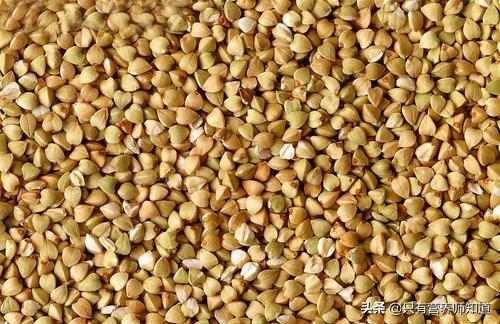
Although fine grains have the benefits of fine grains, such as more clean and hygienic, less impurities, to make the pasta fluffy and soft, white and tender, but the shortcomings are also more obvious, the loss of a lot of cereals in the processing of the unique bran component, and then the loss of more dietary fiber, the loss of dietary fiber means that the food is more conducive to be digested and absorbed, and thus the starch is also easier to be converted into glucose into the bloodstream, the greater the impact of blood glucose. Therefore, the "coarse and fine" approach is very suitable for sugar lovers. Corn residue, sorghum, buckwheat, or other coarse grains retain more dietary fiber content, they can help to smooth postprandial blood sugar. In addition to these coarse grains, miscellaneous legumes, brown rice is also a good choice, such as mung beans red beans, barley, black beans and so on, and black rice, purple rice, red rice, millet and so on. In addition, we can also use potato food to replace the main food, potato food does not have to undergo fine processing, they retain a rich dietary fiber, and also all belong to the carbohydrate-rich food, can provide glucose energy for the body.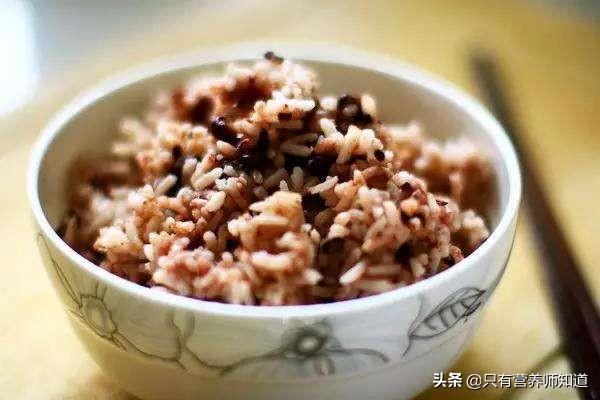
However, it should be noted that it is not "eat these foods" can smooth blood sugar, they are only compared to fine grains can be better to smooth the rate of increase in blood sugar, but if you eat more, the same will be more carbohydrates and cause excessive sugar intake. In short, all staple foods should be consumed appropriately and not in excess. Dietary guidelines recommend a daily intake of 250 to 400g of staple foods, of which 50 to 100g of potatoes, 50 to 150g of whole grains, converted to each meal, we can probably eat 1 to 2 handfuls of coarse and fine with cereals (a small bowl of rice), plus one or half of the potatoes, but many of my friends either focus on the fine grains to eat, or eat a lot of super, especially for sugar lovers should pay more attention to. Especially for sugar lovers should pay more attention.
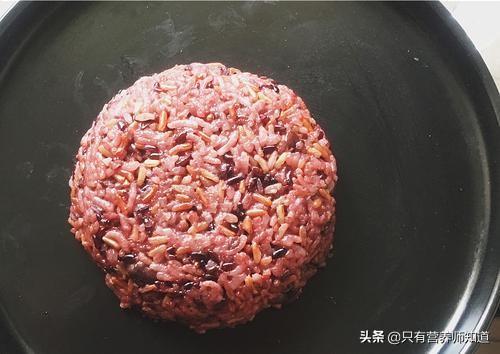
Finally, pay attention to the cooking time of staple foods, if cooked for too long, it may increase the degree of "pasting" of starch, destroy the microcrystalline structure of starch, so that the food is more conducive to digestion and absorption, will make the rate of glycemic rise dramatically, so the staple foods should not be boiled for too long, especially love to drink porridge sugar friends best not to be too frequent, porridge is a typical! Foods with longer steaming time and higher degree of starch dextrinization have a greater impact on blood sugar.
Thanks for the invite.
There are definitely benefits, corn residue, sorghum, brown rice, buckwheat rice and so on belong to the coarse grains, miscellaneous food, coarse grains miscellaneous food benefits where? They are not highly processed, retaining a rich dietary fiber content, and dietary fiber is a component that can not be directly digested and absorbed, because it can not be digested and absorbed, it is mixed with other foods to eat, then help to slow down the digestion of food. The faster the food is digested, the easier the sugar is absorbed and the faster it enters the bloodstream, which means a greater impact on blood sugar. Therefore, if there is a dietary fiber mixture, sugar absorption rate slows down, help to stabilize postprandial blood sugar, and these coarse grains and cereals mixed with rice to eat together, will help to make up for the dietary fiber, to assist in postprandial blood glucose stabilization, on the sugar friend is a certain amount of help.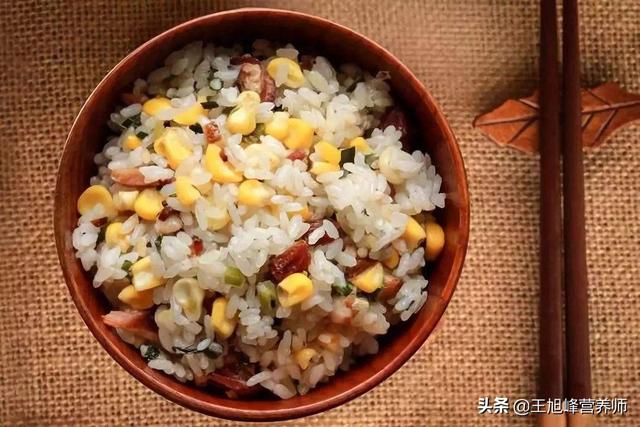
We usually eat "fine grains", sugar friends should indeed try to avoid direct consumption, but in fact, many sugar friends may eat or white rice. Fine grain, as the name suggests, is "fine processing of food", many years ago these food food is not processed overly fine, but which is mixed with more impurities, such as rice contains gravel, we have to carefully amalgamate, now different, in order to meet the needs of people's tastes, hygiene requirements, food in addition to the impurities to do more and more fine rice, basically do not have to amalgamate can also be directly steamed. Basically do not need to pan the rice can also be directly steamed, wheat flour and white and fine, made out of pasta fluffy and soft. These foods taste delicate, very popular, but accordingly, the cereals originally contain a large loss of bran components, and then lost more dietary fiber components, they are very easy to digest, and the starch is more likely to be broken down into glucose absorption, the impact of postprandial glucose is greater, for sugar lovers on the blood sugar is not good. Therefore, we recommend "coarse and fine with" the main food intake, make up for the dietary fiber, for sugar lovers is more favorable practice.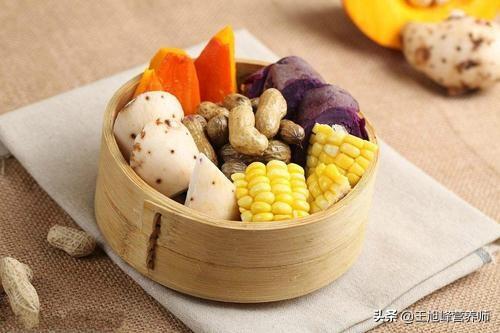
Of course, it is not just the subject mentioned corn residue, buckwheat, etc., there are many options, such as legumes, red beans, green beans, barley, brown rice, black rice, millet, oats, and even nuts, such as peanuts, walnuts, almonds, but all dietary fiber-rich foods, we can add to the fine grains, including vegetables and rice. Potato food is also a good choice, such as potatoes, purple potatoes, yams, but personally do not recommend sweet potatoes, sweet potatoes are potato food in the higher sugar content of food, the most obvious impact on blood glucose; pay attention to the amount of intake of staple food category, although they can assist in smoothing the blood glucose, but it does not mean that they are more good, most of the coarse grains, whole grains, foods are also rich in carbohydrates, carbohydrates are ultimately broken down into glucose, eat more on the blood glucose, as well as to eat too much. If you eat too much of them, it will have an effect on your blood sugar. It is recommended to consume about 2 taels of staple food in a meal, scientifically speaking, we can consume 1~2 small handfuls of whole grain mixed fine grains, plus a fist size of potato food.
All coarse grains are good for diabetics, and now there's a kind of brown rice that's a little yellow that's also good for diabetics
These three kinds of rice are food containing crude fiber, relatively less calories (less sugar) is conducive to diabetic consumption.
This question and answer are from the site users, does not represent the position of the site, such as infringement, please contact the administrator to delete.